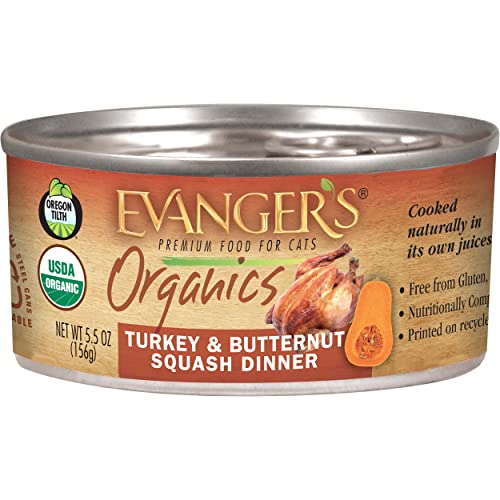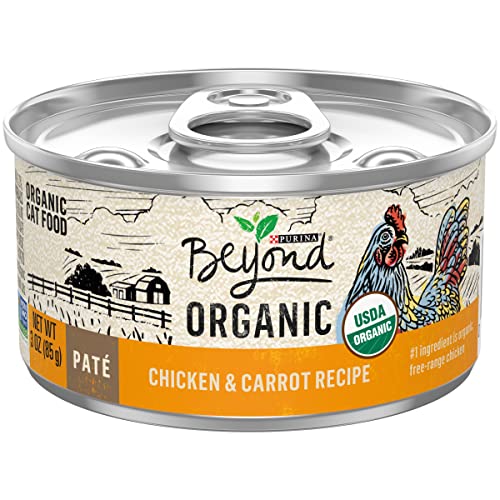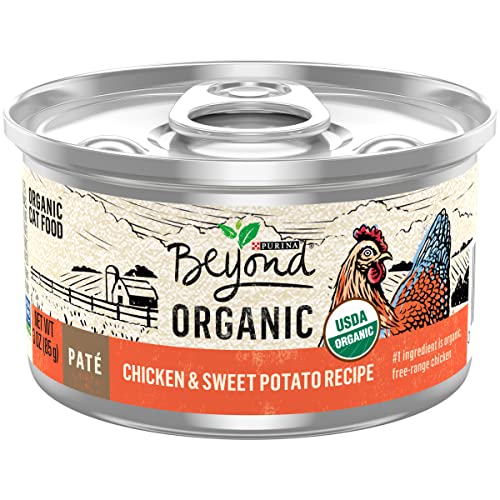Ask any two cat owners whether it's better for a feline friend to roam free or stay safely indoors, and you're likely to spark a passionate debate. The image of a cat gracefully exploring a sun-drenched garden, chasing butterflies and basking in the warmth, is deeply romantic and ingrained in our cultural understanding of cats. But in our modern world, with its bustling streets, unpredictable wildlife, and hidden dangers, the question of whether an indoor or outdoor environment truly serves a cat's best interests becomes increasingly complex. Is it inherently better for a cat to be outdoors, embracing their wild side, or is the safety and control of an indoor life the more responsible choice? This isn’t just a question of preference; it’s a question of health, safety, well-being, and ultimately, responsible pet ownership. This article will delve into the heart of this enduring debate, exploring the multifaceted pros and cons of both indoor and outdoor lifestyles for our feline companions. Our goal is not to definitively declare one environment universally superior. Instead, we aim to arm you with the knowledge to make an informed and personalized decision, one that best suits your individual cat's unique personality, your specific living circumstances, and your unwavering commitment to their long and happy life.
For many cat owners, the appeal of indoor living centers around a single, powerful word: safety. When we consider the myriad dangers lurking just beyond our doorsteps, the indoor haven transforms from a simple living space into a protective sanctuary. Statistically, one of the most significant threats to outdoor cats is the relentless presence of traffic. Cars, trucks, and motorcycles fill our streets, and for a creature low to the ground and often darting unpredictably, the consequences of an encounter are often tragic. Indoor cats, shielded from these metal behemoths, bypass this considerable risk entirely. Beyond traffic, the outdoor world teems with creatures both great and small that can pose a threat. Predators, ranging from neighborhood dogs and opportunistic coyotes in suburban and rural areas, to even aggressive free-roaming cats vying for territory, can inflict serious injury or even prove fatal. An indoor cat living a life free from such confrontations enjoys a peace of mind, and physical safety, that outdoor cats simply cannot guarantee.
The dangers extend beyond physical trauma, creeping into the realm of unseen enemies: disease. The outdoor environment is a melting pot of potential pathogens. Contagious diseases like Feline Immunodeficiency Virus (FIV) and Feline Leukemia Virus (FeLV), debilitating and often fatal, are spread readily through bites and close contact, commonplace encounters for outdoor cats. Rabies, a terrifying neurological disease with no cure, remains a threat in many areas, transmitted through the bite of infected wild animals. Parasites, both internal and external, flourish outdoors. Fleas and ticks, more than just itchy nuisances, can transmit diseases and cause anemia. Intestinal worms, picked up from contaminated soil or prey, can weaken a cat’s system and impact their overall health. Indoor cats, by virtue of their isolation from these vectors, enjoy a significantly reduced risk of contracting these debilitating and sometimes deadly illnesses. Even the seemingly innocuous environment of a garden can harbor dangers. Toxic substances lurk in unexpected places. Antifreeze, with its sweet, alluring taste, is lethally poisonous to cats, and sadly, often found leaking from vehicles or improperly stored. Pesticides, used to keep gardens pristine, can be ingested through grooming or paw contact. Certain plants, beautiful to the eye, can be toxic if nibbled upon. Inside, in a controlled environment, owners have the power to eliminate or minimize these chemical and botanical hazards, creating a truly safe space. And lastly, a fear that haunts many owners of outdoor cats: getting lost. Cats, by nature, are curious explorers, but sometimes curiosity leads them too far afield. Territorial disputes, the pursuit of prey, or simply becoming disoriented can lead to a cat becoming lost, injured, or trapped miles from home. The heartbreak of a lost pet is a burden indoor cat owners are statistically less likely to bear.
Beyond immediate physical safety, indoor living offers a profound degree of control over a cat’s overall health and wellness. Dietary management, often a cornerstone of feline health, becomes significantly easier within the confines of a home. Indoor cats, reliant on their owners for sustenance, have their food intake meticulously monitored. This control is vital in preventing overeating and obesity, a prevalent health concern in domestic cats and a gateway to a host of secondary illnesses like diabetes and joint problems. Owners of indoor cats can also more easily manage specialized diets necessary for cats with allergies, sensitivities, or specific health conditions, ensuring they receive precisely the nutrition they need. Parasite control, crucial for feline well-being, is also streamlined indoors. Regular preventative treatments, be they topical solutions or oral medications, are more consistently administered when a cat’s life is centered within the home. Detection of parasites, both internal and external, becomes quicker and more straightforward when a cat’s environment and habits are readily observable. Veterinary care itself often becomes more proactive for indoor cats. Without the immediate and often visible threats of the outdoor world, owners of indoor cats tend to schedule preventative care appointments more regularly. Annual check-ups, vaccinations, and early detection screenings become integrated into the routine, allowing for the proactive management of health and the early interception of potential problems before they escalate. Finally, indoor living provides consistent climate control, a significant benefit for feline comfort and health. Cats, while adaptable, are still vulnerable to the extremes of weather. Heatstroke in the sweltering summer months and hypothermia during frigid winters are genuine risks for outdoor cats. Indoor cats, sheltered from these fluctuations, live in a temperature-regulated environment, reducing stress on their bodies and promoting overall well-being.
The advantages of indoor living extend beyond the purely physical realm, deeply impacting the bond between cat and owner. The increased proximity inherent in indoor life fosters more frequent and deeper interactions. Playtime, cuddling sessions on the sofa, and shared quiet moments become woven into the fabric of daily life. This constant presence strengthens the emotional connection, creating a deeper, more symbiotic relationship between cat and human. Behavioral observation, crucial for understanding a cat's health and well-being, becomes significantly enhanced indoors. Subtle shifts in appetite, changes in litter box habits, or nuanced alterations in behavior are more readily noticed in the contained environment of a home. These early warning signs, often missed in outdoor cats who disappear for hours at a time, can be critical in the timely diagnosis and treatment of underlying health issues. For owners who are allergy sufferers, indoor living offers a measure of relief. While eliminating cat allergens entirely is impossible, controlling the environment reduces the dispersal of pet dander and allergens throughout a wider space, making allergy management strategies more effective and improving the quality of life for sensitive owners. Finally, on a broader, perhaps less immediately personal level, indoor cat ownership can be seen as a responsible choice in terms of environmental impact. While perhaps a less discussed aspect, indoor cats, by staying within our homes, exert less direct pressure on local wildlife populations. The hunting instincts of cats, though natural and deeply ingrained, can have a significant impact on bird populations and other small animal ecosystems, particularly in urban and suburban environments. Indoor living minimizes this impact, aligning with a growing awareness of our responsibility to protect biodiversity.
However, to present only the case for indoor living would be to paint an incomplete picture, to ignore the powerful and deeply rooted call of the wild that resonates within every feline. For centuries, cats have roamed, explored, and hunted outdoors, and denying them access to this ancestral domain raises legitimate questions about fulfilling their natural needs and instincts. The allure of outdoor access lies, first and foremost, in its unparalleled capacity for environmental enrichment. The indoor world, however thoughtfully curated, remains a relatively static environment. The outdoors, in contrast, is a dynamic, ever-changing tapestry of sights, sounds, smells, and textures. Physical exercise and stimulation are paramount for a cat’s well-being, and the outdoors provides a playground on a grand scale. Running across lawns, leaping over fences, climbing trees – these are not just idle activities, but essential expressions of feline physicality. The mental enrichment offered by the outdoor world is equally profound. A constantly shifting landscape, buzzing with the activity of insects, the rustling of leaves, the distant sounds of the neighborhood, engages all of a cat's senses in a way that no indoor environment, however stimulating, can truly replicate. This sensory feast reduces boredom, sharpens their awareness, and promotes mental agility. At the heart of a cat's nature lies the ingrained drive to hunt. Outdoor access, whether controlled or less restricted, allows cats to engage with these deeply rooted predatory instincts. Stalking insects, chasing leaves, or even, in some cases, engaging in genuine hunting, satisfies a primal need that, if suppressed, can lead to frustration and behavioral issues. And let us not forget the simple, yet vital benefits of sunlight and fresh air. Sunlight plays a critical role in Vitamin D synthesis, essential for calcium absorption and bone health. Fresh air, with its ever-changing currents and diverse array of scents, provides a level of sensory stimulation and vitality that recycled indoor air simply cannot match.
For some cats, particularly those with specific personality types, outdoor access can offer tangible behavioral benefits. Boredom, a common ailment of indoor-only cats, can manifest in destructive behaviors. Scratching furniture, excessive vocalization, and even aggression can be expressions of pent-up energy and unfulfilled needs. For these cats, the ability to explore, hunt, and simply “be a cat” outdoors can alleviate boredom and reduce these undesirable behaviors within the home. Furthermore, for certain feline personalities, the freedom and variety of the outdoor world can be inherently stress-reducing. Claustrophobia, though perhaps anthropomorphic when applied to cats, is not entirely unheard of. Some cats simply thrive in open spaces, finding confinement within four walls inherently stressful. For these individuals, carefully managed outdoor access can provide a sense of freedom and control that contributes significantly to their overall well-being and happiness.
However, the concept of “outdoor access” is not monolithic. Responsible outdoor access is the crucial distinction, separating the romanticized image of the free-roaming cat from the realities of modern pet ownership. Unfettered freedom, while appealing in theory, often clashes with the safety concerns previously outlined. The solution lies in controlled outdoor spaces. Cat enclosures, often called "catios," offer a secure and enriching outdoor experience, allowing cats to bask in the sun, breathe fresh air, and observe the world beyond, all while remaining safe from traffic, predators, and other hazards. Fenced yards, when properly cat-proofed with high, angled fencing, can provide a larger, yet still secure, outdoor territory. Leashed walks, while requiring owner dedication, offer controlled exploration and exercise. Even supervised access to a garden, under constant watchful eyes, can provide a valuable, albeit limited, taste of the outdoors. Gradual and supervised introduction is paramount for any cat venturing outdoors, even in controlled environments. Acclimating cats slowly to new sights, sounds, and smells, under constant supervision, minimizes stress and allows them to adapt to the outdoor world at their own pace. Especially in the initial stages, vigilance is key, ensuring they remain within designated safe areas and do not encounter unforeseen dangers.
Regardless of the level of outdoor access, essential safety measures remain non-negotiable. Microchipping is crucial for any cat that ventures beyond the home, providing a permanent form of identification should they become lost. A collar with ID tags, clearly displaying the owner's contact information, offers a quicker means of identification for anyone who finds a wandering cat. Regular parasite prevention and vaccinations become even more critical for cats with outdoor exposure. Even in controlled environments, exposure to fleas, ticks, and parasites is heightened compared to purely indoor cats. And finally, responsible outdoor access requires environmental awareness. Consider your local environment carefully. Traffic density, predator populations, the presence of toxins (like certain types of rodenticides used in gardens) and the social dynamics of neighborhood cats all play a role in determining the relative safety of any outdoor space, controlled or otherwise.
When we stand back and analyze the indoor versus outdoor debate, a clear picture emerges: neither environment reigns supreme. Instead, we are presented with a spectrum of trade-offs, a balancing act between safety and freedom, control and enrichment. Indoor living prioritizes safety, offering unparalleled protection from external dangers and greater control over health and well-being, but potentially at the cost of environmental stimulation and the fulfillment of certain natural instincts. Outdoor access, in its responsible, controlled forms, promises enrichment, sensory stimulation, and the satisfaction of feline drives, but inevitably introduces a degree of risk, however minimized. The "best" environment, therefore, is not a universal decree, but a deeply personal equation, one that must be solved individually for each cat, considering their unique needs and personality alongside the realities of their owner's lifestyle and living situation.
The key to solving this equation lies in personalizing the choice, moving beyond broad generalizations and focusing on the specific cat in question. A cat’s individual personality and temperament are paramount factors. Is your feline companion a natural adventure-seeker, bold and curious, constantly drawn to windows and doors, or are they a contented homebody, thriving in the predictable comfort of their indoor domain? A timid and cautious cat, easily spooked by new environments, might find the outdoor world overwhelming and stressful, whereas a confident and inquisitive cat might flourish with the added stimulation. Consider their energy levels. A high-energy cat, brimming with youthful exuberance, might benefit greatly from the physical outlets offered by outdoor access, while a low-energy senior cat might be perfectly content with the quieter pace of indoor life. Reflect on their history. A cat who was once a stray, accustomed to fending for themselves outdoors, might retain a stronger drive for outdoor exploration, while a cat raised entirely indoors might have no inherent desire to venture beyond their familiar walls. Your own living situation and location are equally crucial variables. An urban environment, with its dense traffic, higher predator populations (in some areas), and potential exposure to toxins, presents a significantly different risk profile compared to a rural or suburban setting. The type of home you live in also plays a role. An apartment dweller might find truly safe and controlled outdoor access challenging to create, while a homeowner with a fenced yard has more options for responsible outdoor enrichment. Consider the overall safety of your neighborhood. Are you surrounded by busy roads? Are there known predators in the vicinity? Are there local laws regarding roaming pets? These factors must be weighed carefully when assessing the viability of any form of outdoor access. Finally, your own lifestyle and ability to provide care are integral parts of the equation. Indoor cats, reliant on their owners for environmental enrichment, demand more active engagement. Are you prepared to dedicate time to daily playtime, interactive enrichment, and creating a stimulating indoor environment? If you are considering outdoor access, are you genuinely willing and able to commit to consistent supervision, implementing safety measures, and managing the inherent risks, however minimized they may be? Be honest with yourself about your capacity to provide for your cat's needs in either environment.
Ultimately, the decision, whether to keep your cat indoors or provide safe outdoor access, should be guided by one overriding principle: prioritize your cat's safety and well-being above all else. Regardless of the environment you choose, enrichment is non-negotiable. For indoor cats, this means proactively creating a stimulating and engaging living space. Vertical spaces, climbing structures, scratching posts, interactive toys, puzzle feeders, and window perches transform a house into a feline paradise. Regular playtime, dedicated interaction, and a constantly evolving array of toys and activities are essential to combat boredom and satisfy their innate curiosity. For cats with safe outdoor access, enrichment should extend to these outdoor spaces as well. Cat-friendly plants, climbing structures within catios or fenced yards, safe water features, and even outdoor scratching posts can enhance their outdoor experience and provide added stimulation. And crucially, regardless of whether your cat lives exclusively indoors or enjoys outdoor adventures, regular veterinary care is paramount. Routine check-ups, vaccinations tailored to their lifestyle, and consistent parasite prevention form the foundation of responsible pet ownership and ensure a long and healthy life, no matter their preferred environment. Responsible pet ownership, in its truest form, is about commitment. It's about recognizing that the "best" environment isn’t about fulfilling a romantic ideal or adhering to a rigid ideology. It's about understanding the unique needs of your individual feline companion, honestly assessing your own circumstances, and making a thoughtful, informed decision that prioritizes their safety, well-being, and ultimately, their happiness. With careful consideration and a dedicated commitment to responsible care, you can create a happy, healthy, and fulfilling life for your cat, whether they reign supreme indoors or explore the world beyond your walls in a safe and enriching way. The best environment isn't a place; it's a commitment to providing the best possible life for your feline friend, wherever that life may be lived.







